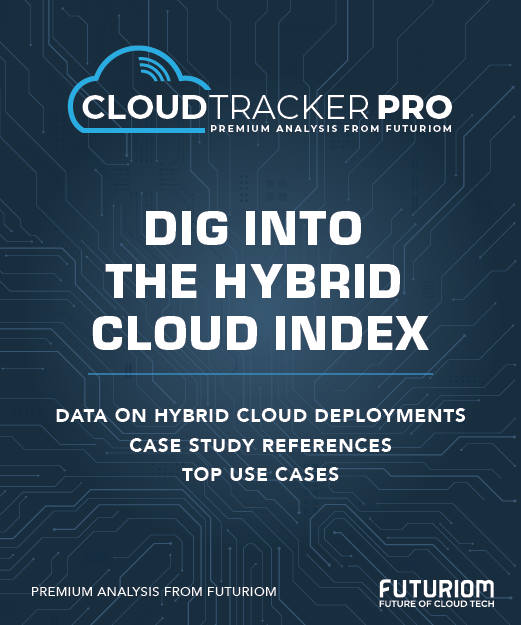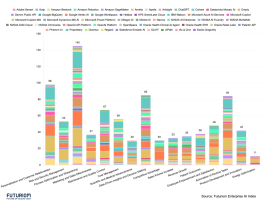Microsoft and Meta Deliver on Earnings

Major hyperscalers Microsoft and Meta aren’t seeing an AI slowdown, and they’re banking on increased demand despite macroeconomic uncertainty stemming from the Trump trade war. But questions swirl as to whether the good news will be sustained longer term.
On Wednesday, April 30, Microsoft announced revenue of $70.1 billion for its quarter ended March 31, 2025, up 13% year-over-year (y/y). Adjusted net income was $25.8 billion, up 18% y/y; EPS came in at $3.46 per diluted share. Microsoft’s Intelligent Cloud segment, which includes Azure, scored $26.8 billion in sales, up 21% y/y. Azure services grew 33%, of which 16% were from AI services. Nearly all measures handily beat Wall Street expectations and were announced to universal praise from investors on the conference call.
AI Demand Remains Strong
AI was instrumental in Microsoft’s glowing report. Its Azure AI Foundry developer platform is now used by over 70,000 enterprises, according to CEO Satya Nadella. And the Microsoft Fabric analytics platform, which works with Foundry data, grew 80% in the quarter and now boasts 21,000 paid customers.
Further, the company claims to have processed over 100 trillion AI tokens during the quarter, including 50 trillion tokens last month alone. Agents are being built with Microsoft’s new Agent Service, and other tools are emerging, along with models from OpenAI as well as from a range of other players, including Cohere, DeepSeek, Meta, Mistral, and Stability.
But What About Those Canceled Datacenters?
All of the above points to ongoing healthy demand from enterprise customers. Nevertheless, Microsoft is taking a measured approach to building out datacenters to support Azure AI Foundry and other services, something reflected in news last quarter that Microsoft was pulling back on multiple datacenter projects.
“[T]he key thing for us is to have our builds and lease be positioned for what is the workload growth of the future,” said Nadella in response to a question on the datacenter buildout issue. “That’s what you have to go and seek to. There’s a demand part to it. There is the shape of the workload part to it, and there is a location part to it. You don’t want to be upside-down on having one big data center in one region, when you have a global demand footprint. You don’t want to be upside-down when the shape of demand changes…”
The shape of demand could indeed shift as customers struggle with the macro uncertainties that cast a shadow on Microsoft's plans.
Microsoft opened datacenters in 10 countries across five continents last quarter. But it spent less on capital expenditures (capex) than expected. The total capex of $21.4 billion was down about 5% from last quarter’s $22.6 billion. Still, the company expects capex to increase in its fiscal Q4, and total spending this year remains in line with earlier guidance of approximately $80 billion.
Meanwhile, Meta…
Meta’s first-quarter results announced this week also bolstered AI growth projections. Revenue of $42.3 billion was up about 16% y/y. Diluted EPS came in at $6.43 on adjusted net income of $16.6 billion, which was up 35% y/y.
Meta CEO Mark Zuckerberg noted on the earnings call:
“The major theme right now of course is how AI is transforming everything we do. And as we continue to increase our investments and focus more of our resources on AI, I thought it would be useful today to lay out the five major opportunities that we're focused on: improved advertising, more engaging experiences, business messaging, Meta AI, and AI devices.”
In seeking to support these AI-related efforts, Meta spent $13.7 billion on capex this quarter. And it plans to spend even more than it originally guided to this year. Now the company plans to spend $64 billion to $72 billion on capex, up from $60 billion to $65 billion predicted earlier.
How will this play out in a year when recession looms? Clearly, Meta believes it's positioned to withstand the trade upheaval.
What Happens Next?
Both Microsoft and Meta say they that despite their investments in AI infrastructure, they will come up short of meeting full demand for AI infrastructure this year. Yet despite their aggressive capex plans, they could find that infrastructure buildouts will likely be hindered by tariffs and export controls that snarl the AI service supply chain.
Indeed, as Futuriom has predicted, the outlook for 2026 could be less rosy than current results seem to indicate. On Microsoft’s call, EVP and CFO Amy Hood said: “We expect capex [in FY26] to grow, it will grow at a lower rate than FY25 and will include a greater mix of short-lived assets…” Hood means GPUs and CPUs, which could be particularly affected by tariff constraints.
The longer that proposed tariff policies go without negotiated settlements, the bigger the trouble for companies such as Microsoft and Meta. Without clear insight into the longer-term path of trade deals, management will have trouble sourcing components, planning budgets, and figuring out where to build AI infrastructure.
Futuriom Take: This week’s earnings from Microsoft and Meta look great, but macro uncertainties could limit their capabilities to meet investor expectations in the longer term.





















